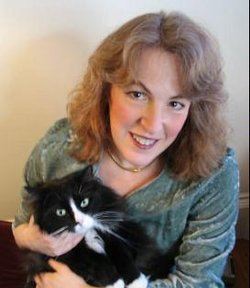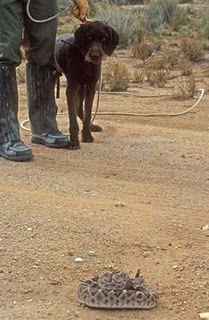Animal Author Interview – Clea Simon
Share


Many years ago, I was fortunate enough to be a judge in an international writing competition. The books were all related to pets, but I was lucky to pull the fiction writing category and this was my first exposure to Clea Simon’s extraordinarily entertaining pet noir series.
For years, I’ve been a fan of Simon’s work and so, when the International Thriller Writer’s Association asked me to interview her for an upcoming article in The Big Thrill, I was honored to accept the assignment. (You can read that interview at ITW).
Parrots Prove Deadly: A Pru Marlowe Mystery is the available in stores on April 2, 2013. But, here is an advanced look at what it takes to write a pet mystery. I strongly encourage you to pick up this novel as soon as it hits stores, and if you need something to tie you over in the meantime, check out one of her 17 other books.
 Synopsis of PARROTS PROVE DEADLY by Clea Simon
Synopsis of PARROTS PROVE DEADLY by Clea Simon
Parrots will repeat anything – they don’t talk sense. Or do they? When Pru Marlowe is called in to retrain a foul-mouthed African gray after its owner’s death, the bad-girl animal psychic can’t help hearing the bird’s words as a replay of a murder scene. But the doctor on call scoffs at the idea, and the heirs just want their late mother’s pet to quit cursing. With the only other possible witnesses being an evasive aide, the blind neighbor, and a single-minded service dog, Pru is stuck with what may be a feather-brained theory. Even her crotchety tabby Wallis doesn’t buy it, although she’s more than willing to “interrogate” the big bird, as Pru deals with drugs, jealousy, and a potential rabies outbreak in Parrots Prove Deadly, the third Pru Marlowe pet noir.
What inspired the story of an African Grey Parrot as the center of a murder mystery?
Whenever I explain this series, I tell people, “Well, the animals don’t really talk, because that’s not how they communicate. But they make themselves understood.” Then I thought – or someone mentioned – well, what about animals that do talk. A friend referred me to the research that psychologist Irene Pepperberg did with the parrot Alex, which showed that parrots can think and learn how to use words – our words – to convey thoughts, around the level of a three-year-old. That just hooked me! I thought: how would you know if a parrot was trying to tell you something, or just “parroting” back phrases? The more I researched, the more I wanted to use a parrot in a mystery. And of course, I knew Wallis would have strong feelings about Pru becoming involved with a bird.
Tell us a little about Pru Marlowe and her special abilities. How did you come up with the concept?
Pru was actually born out of a period when I was reading a lot of the new woman-centered noir. Authors like Megan Abbott and Linda L. Richards
, etc., and I really wanted a tough protagonist. But… being me, she had a cat. And then I thought, in noir terms, that animals would be utterly unsentimental about murder, about crime. The result was a short story, and since I loved my characters I wanted to do more.
How much research did you do on African grays and service dogs before writing your novel?
As much as I can – though while I’m writing I always realize that there’s something I need to know that I don’t know. Then I end up making frantic phone calls to people and doing more research. I only hope I don’t make too many obvious mistakes. It is important for my books to feel as real as possible, and that means getting the animal info correct (even if the overall concept of understanding what they are saying is fantasy).
Which characteristic of your main character, Pru Marlowe, do you most wish you shared?
She is fearless. I envy that. I mean, it gets her into trouble, but still, I wish I feared less.
Can you tell us a little about your own pets?
These days, I’m very much a cat person. I love having a feline companion – they’re the perfect pet for a writer. My current cat, Musetta, totally has that Wallis attitude, though she can be very affectionate, too (she doesn’t like me talking about that, though. She’d rather be known as tough). When I was younger, I had a wide variety of pets, including a toad, Dyatt, who I adored. He would nestle into the warmth of my hand and I would catch flies for him.
I’ve discovered that nonfiction writers who move into fiction genres generally write mysteries that are also very factual (true to the animal’s nature). For example, in my own novel SHEPHERD’S MOON, I do extensive research on all species to ensure that the Shifters and Weres characteristics are true to their animal counterpart. Did you find yourself working individual mannerisms into the book while creating PARROTS PROVE DEADLY?
Very much so! In fact, as with the parrot, I’ll sometimes find myself inspired to create a plot point around an animal’s behavior. Because of my recurring character Frank, who is a ferret, I’m learning more about these fascinating mustelids. I think Frank is due to have his own adventure soon.
All of your mysteries revolve around an animal, usually cats. Do you find it more difficult or less difficult to define readership in this genre?
Animal mysteries come with a readership, I think, though I do push the boundaries by being a little less cute and little harder edge. The greater challenge is getting readers who don’t think they are “animal mystery” readers to try my books!
Which type of animal do you find most interesting to write about?
All of them! And not just pets. I have been reading the numerous stories about the problems that occur when people keep “exotic” – i.e., wild – animals as pets, and that’s at the core of my next Pru book.
Tell us about your journey to publication:
It’s more a journey to fiction. I was a journalist for years and then wrote several nonfiction books. But it wasn’t until a bookstore owner – the great Kate Mattes – told me “you should write a mystery,” that I felt like I could. The occasion was her annual holiday party. She’d invited me to sign my last nonfiction book (The Feline Mystique: On the Mysterious Connection Between Women and Cats) along with all the mystery writers, and so I started one the next day. I guess I needed permission! When you write nonfiction, you know you are delivering information, so that’s something of worth. When you write fiction, all you are doing is telling a story and it’s hard to believe that anyone would just want something you … you know, just made up.
What is something that may surprise your fans about you or your writing process?
How much I procrastinate? Of course, anyone who follows me on Facebook knows that I spend way too much time staring out at the birds at the feeder and talking to Musetta. But when I am writing, I do have a daily word goal (anywhere from 1,000 to 1,700) and I always meet it. That daily newspaper training! I may be at my desk late (last night, I was here till 9:45 pm). But I Make The Word Count. Have To.
What are you working on now?
I have two books in the works right now. The next Pru (#4), which centers on an exotic pet situation gone horribly wrong, and also the next of my Dulcie Schwartz feline mysteries, which centers around the ghost of a beloved cat. Though in this one there may or may not be a werewolf making the rounds too…
About Clea Simon
A recovering journalist, Clea Simon is the author of 12 mysteries and three nonfiction books. PARROTS PROVE DEADLY is the third in her Pru Marlowe pet noir series. She lives in Somerville, Massachusetts, with her husband Jon and their cat, Musetta, and can be reached at www.CleaSimon.com
Parrots Prove Deadly
by Clea Simon
c. 2013, Poisoned Pen Press, 250 pages
$29.95 hardcover, $8.66 paperback










